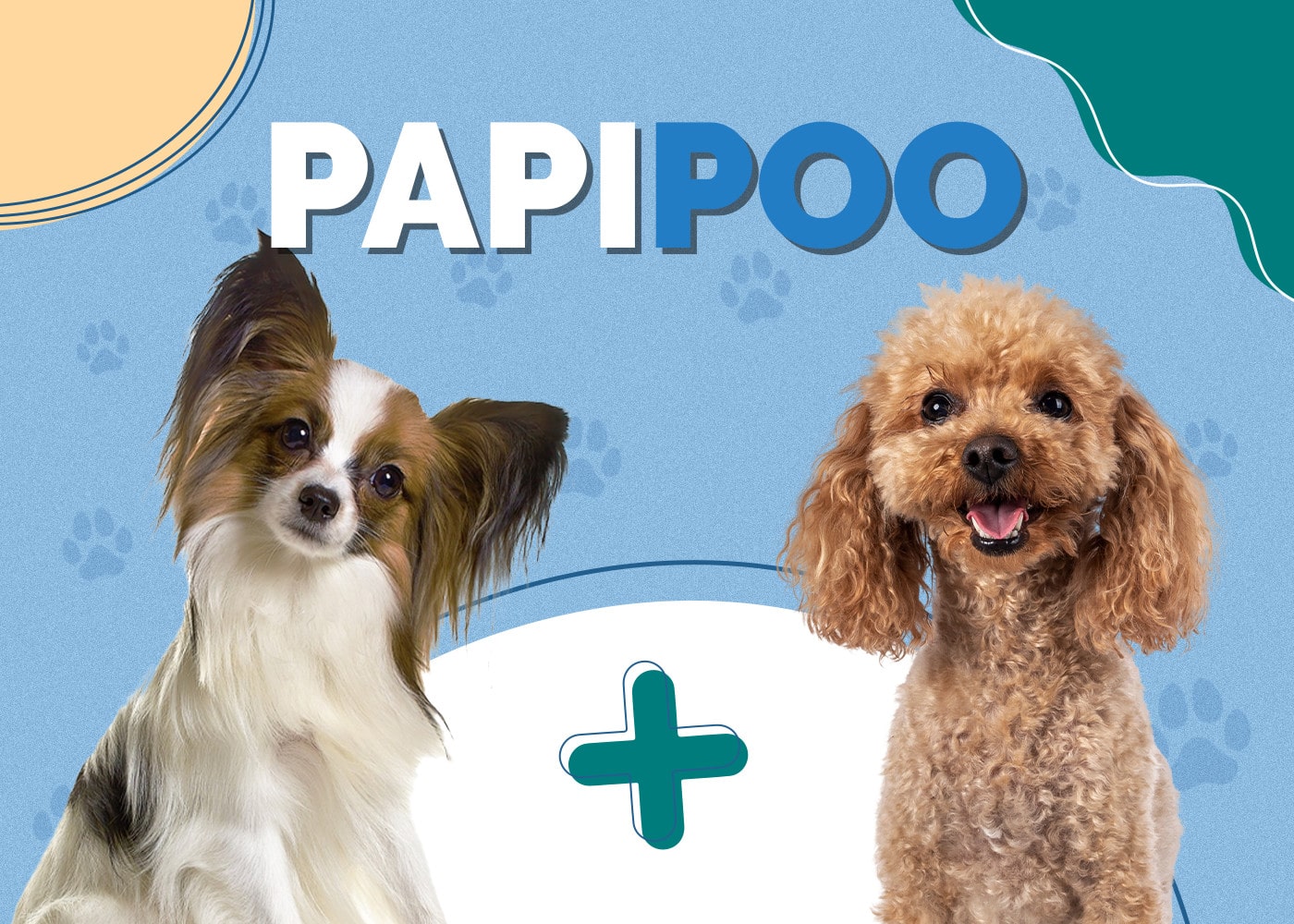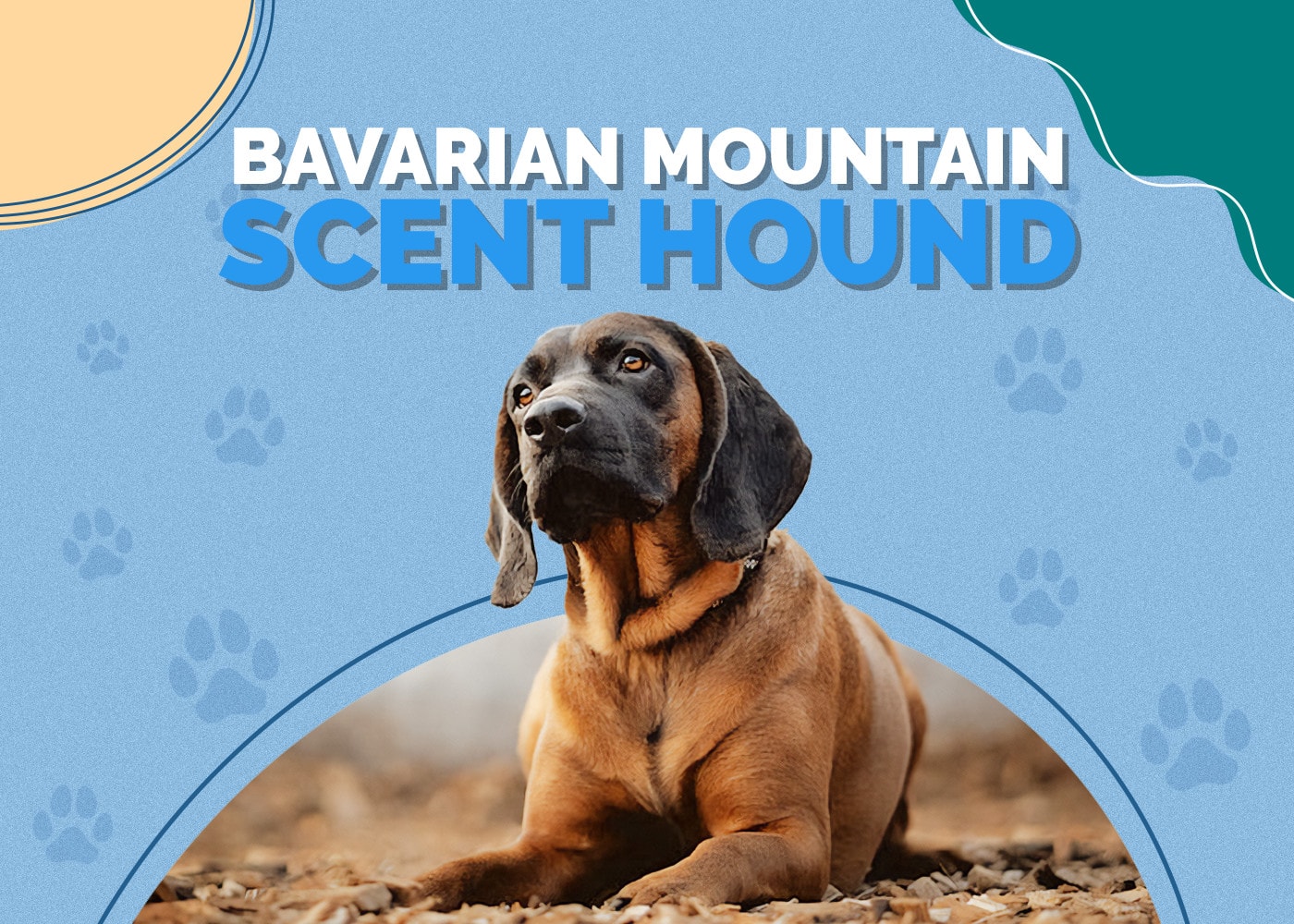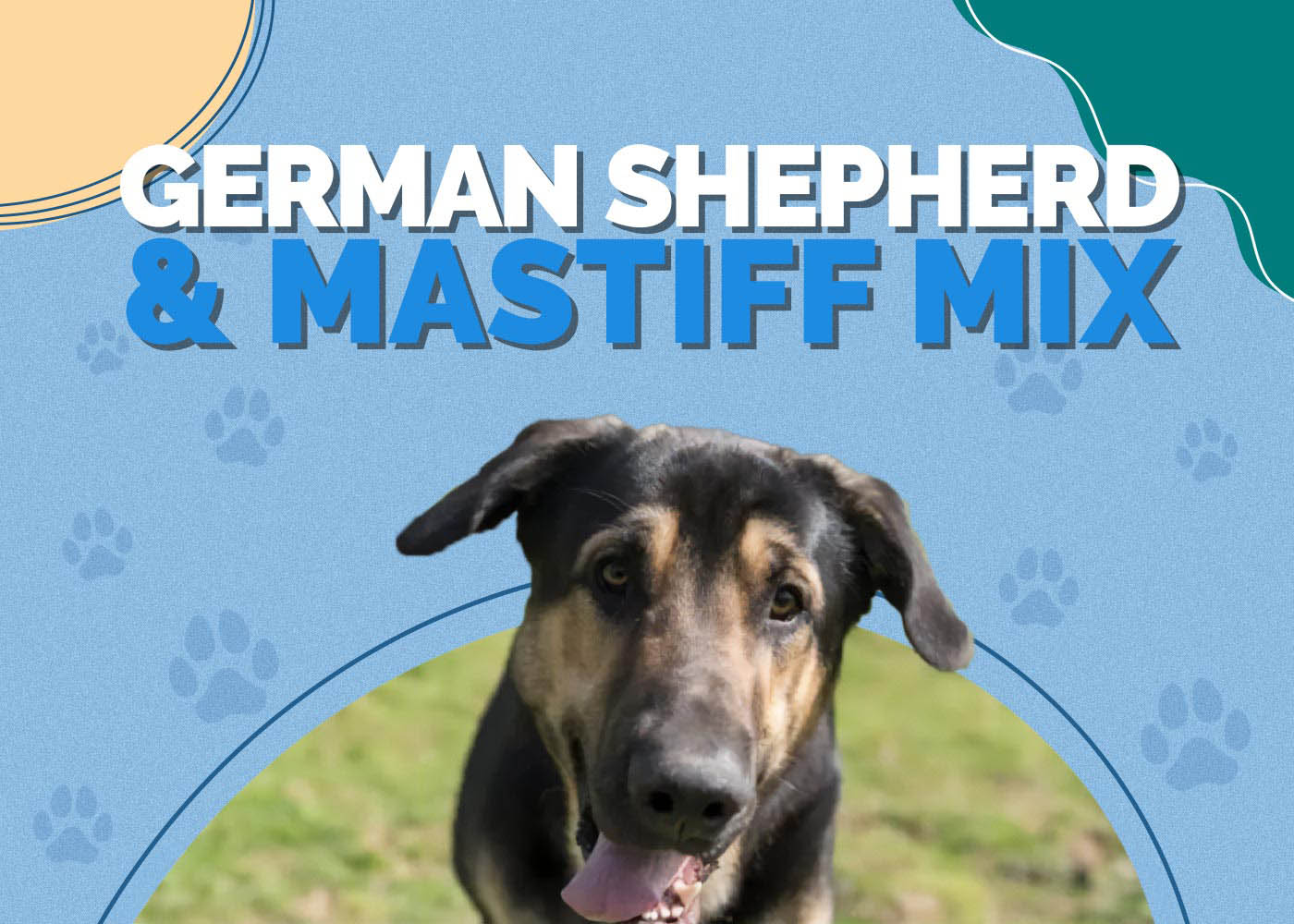German Pinscher vs Doberman Pinscher: What’s the Difference?

Updated on
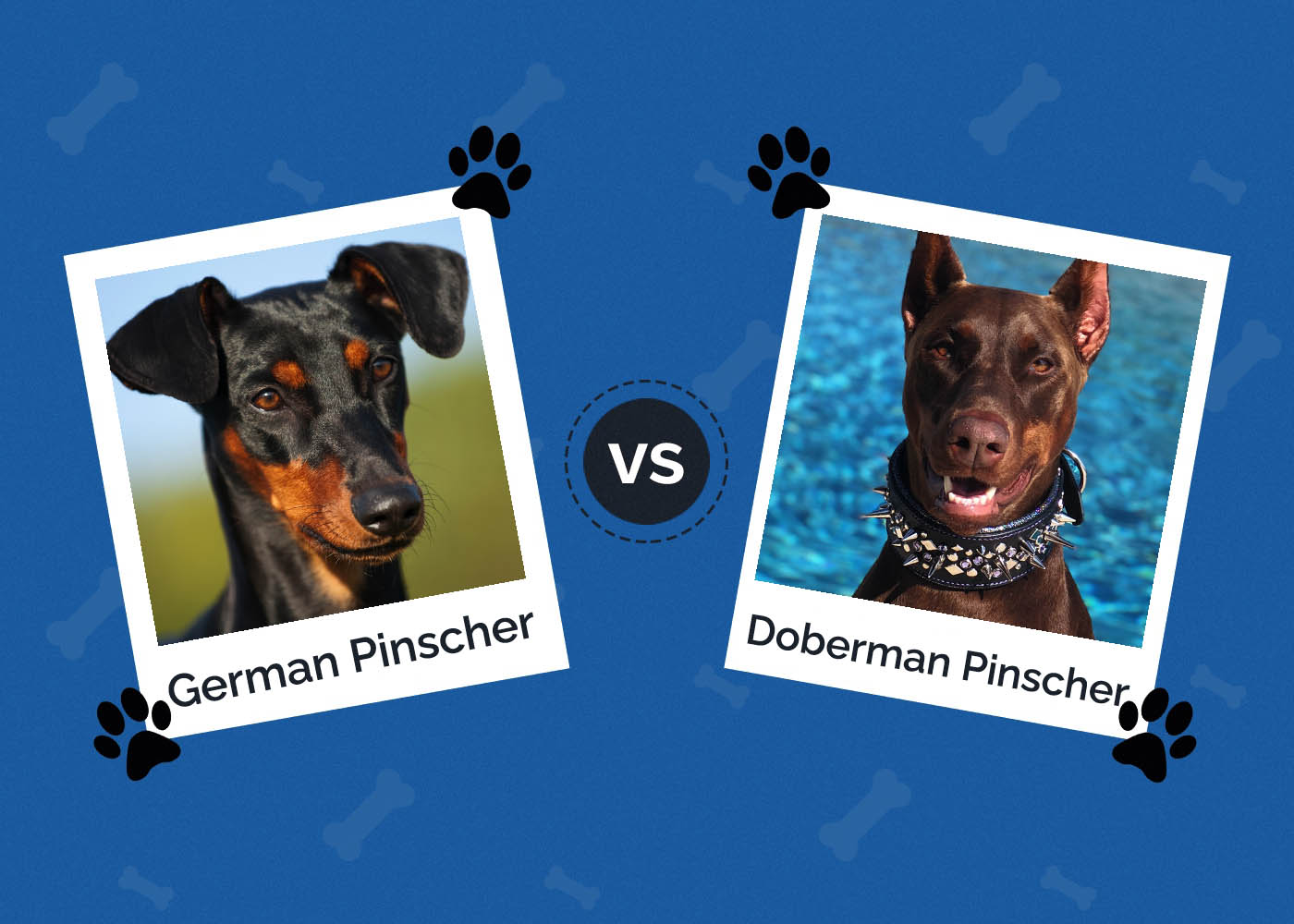
To the untrained eye, German Pinschers and Dobermans (also called Doberman Pinschers) may seem like the same breed. They have similar coat colorations, head shapes, and even similar temperaments. Both breeds were also developed in the same country, so it’s no surprise that they’re often mixed up. However, when a German Pinscher is compared to a Doberman Pinscher, there are key differences that make them separate breeds. Let’s break down both breeds to see what makes them different.
Visual Differences
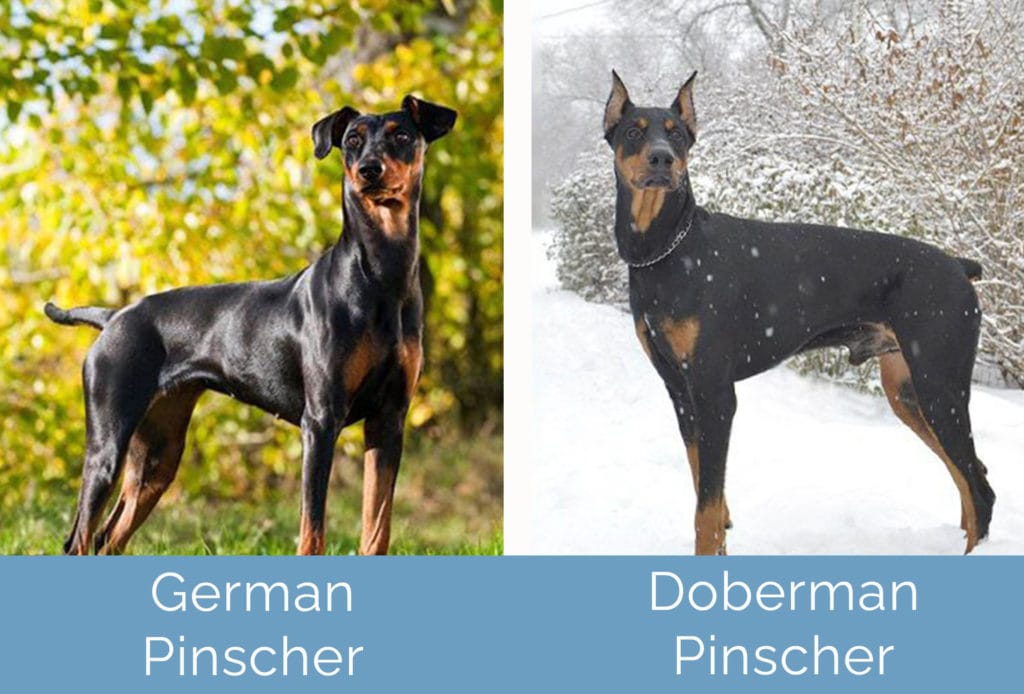
A Quick Overview
- Average Height (adult): 17-20 inches
- Average Weight (adult): 25-45 pounds
- Lifespan: 12-14 years
- Exercise Needs: High, 2+ hours (can be more)
- Grooming Needs: Low
- Family-friendly: Yes
- Dog-friendly: Yes, Needs early socialization
- Trainability: Yes, best suited for experienced owners
- Average Height (adult): 23-27 inches
- Average Weight (adult): 70-99 pounds
- Lifespan: 9-12 years
- Exercise Needs: High, 3+ hours (can be more)
- Grooming Needs: Moderate
- Family-friendly: Yes
- Dog-friendly: Yes, Needs early socialization
- Trainability: Yes, best suited for experienced owners
German Pinscher
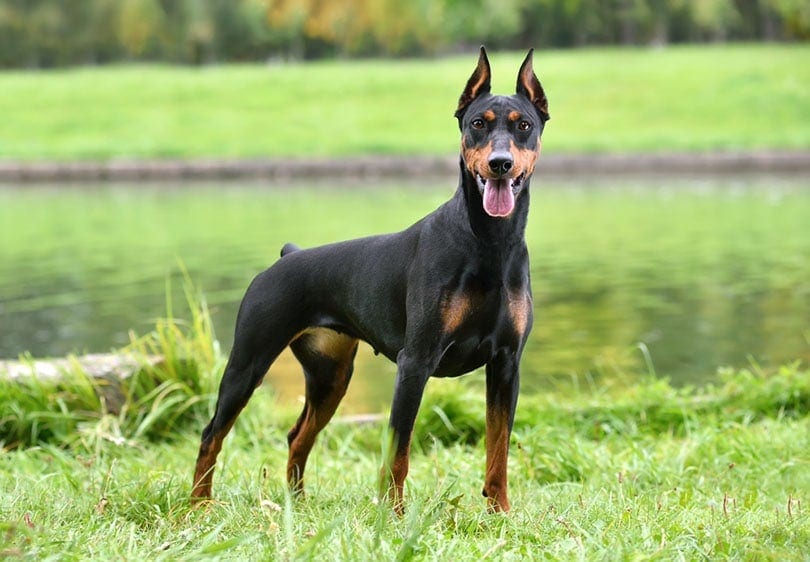
Originating in Germany, the German Pinscher is quite an important breed. It is one of the main foundation breeds for Dobermans, Rottweilers, and a few other breeds that are popular today. While it is older than those breeds, the German Pinscher wasn’t recognized by the AKC until 2003. It can be traced back to the mid-1800s, though there are some records that claim they were around as early as the 1780s. They were bred for a variety of working purposes, including herding and guarding.
Temperament
German Pinschers are energetic, but focused working dogs, aware and alert of their surroundings. They’re highly trainable with a knowledgeable owner and can be trained for a variety of work and sports. German Pinschers are known for their strong loyalty, which can turn into overprotectiveness if they’re not socialized frequently. They’re quick and agile dogs with high-prey drives, which can be a challenge for new dog owners. German Pinschers are also playful and can be great family pets, but their exercise needs might be too much for the average household.
Training
German Pinschers need structure and routine to understand their boundaries, especially in households with children. Positive reinforcement training is a good start, but it’s all about repetition and confidence. Group obedience classes can be a fun experience, especially since German Pinschers are quick learners. Early socialization with people and other dogs is an absolute must since they have natural guarding instincts that can get out of hand. For first-time dog owners, a professional dog trainer may be needed.
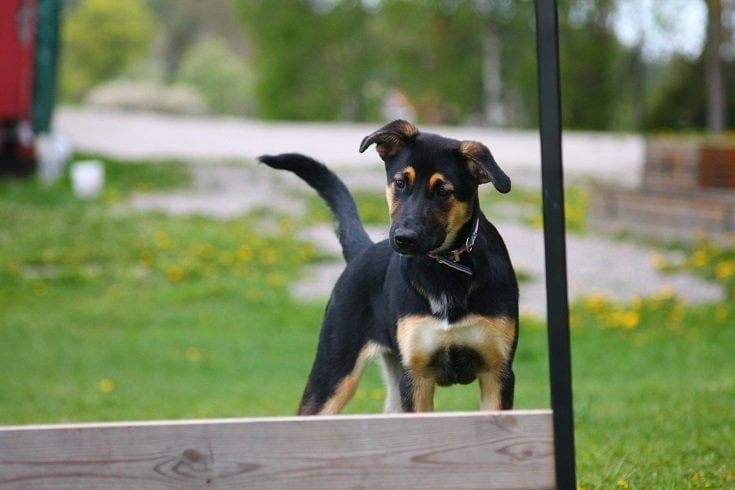
Exercise
German Pinschers love to be active and they require a good deal of exercise to be happy. These are natural athletes that can easily excel in canine sports, so they need to have time to run around and burn off energy every day. A few daily walks are fine, but they need time off-leash in an enclosed area to roam freely. German Pinschers make excellent hiking companions, so they’re great for individuals and families that enjoy long hikes and camping outdoors. They also need mental stimulation to build confidence, especially German Pinschers that come from strong working lines.
Grooming ✂️
Grooming is a breeze with German Pinschers due to their shorthaired coats but brushing them out can help reduce shedding. A simple dog brush will do the job and the bristles can help promote natural oil production to keep the coat shiny. Be wary of bathing German Pinschers more than once a month, which can cause their skin to be dry and irritated. Their nails need to be trimmed on a monthly basis, depending on their activity levels.
Doberman
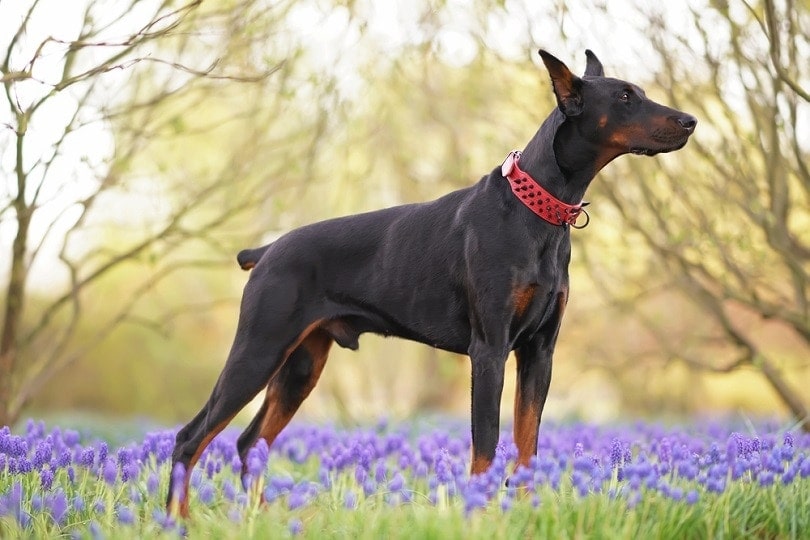
The Doberman Pinscher can be traced back to around 1890, developed by Karl Friedreich Louis Dobermann. Karl Dobermann’s aim was to create a medium-large breed for protection and companionship, so it’s thought that the Doberman was created by crossing multiple breeds like the Rottweiler, German Pinscher, and other lesser-known German breeds. While most countries today call it the Doberman, the United States dropped the second ‘n’ and kept the word Pinscher.
Temperament
Dobermans are similar in temperament to German Pinschers in that they’re both hardworking dogs with a lot of versatility, except in a bigger sized dog. Fiercely loyal to their families and highly alert, Dobermans are natural guardians of their households. Intelligent and agile, they also can excel in obedience and canine sports. Dobermans need a lot of human interaction on a daily basis, so it’s crucial that they’re not left home for hours at a time. They will do best with a confident owner that can provide them with enough attention and exercise since they’re prone to destructive boredom.
Training
Dobermans also need structure and routine to set boundaries in the household, especially because of their size. An overprotective and stubborn Doberman is asking for trouble, so a consistent training schedule is essential. Obedience training with positive reinforcement methods is usually recommended, but a professional dog trainer is usually needed for inexperienced owners. Dobermans need a job to do and thrive off of routine, so it’s important that they’re provided in order to prevent boredom or anxiety.
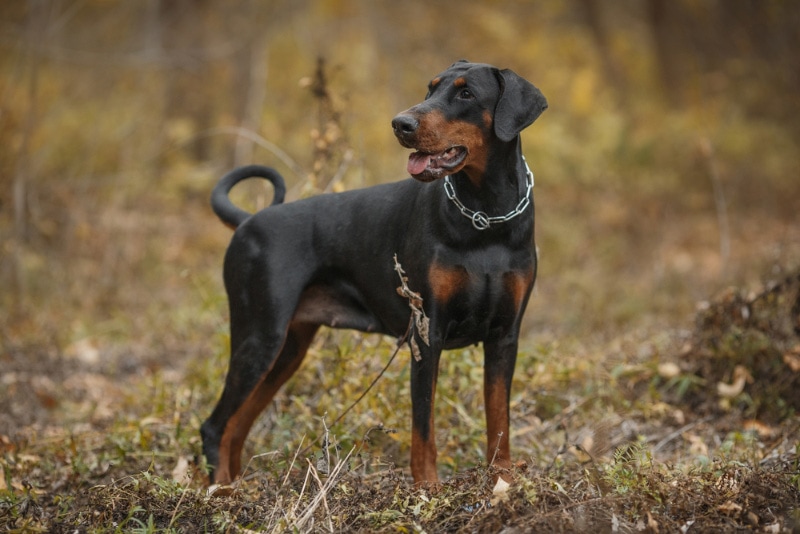
Exercise
Dobermans also need a lot of exercise and enjoy running around off-leash, but they need to be in a fenced-in area to prevent prey-driven chasing. These large dogs need more than a few walks around the block, so canine sports like agility should be highly considered. As with German Pinschers, Dobermans enjoy long hikes and can be great camping companions. While they may have high exercise needs, Dobermans love to be active and need a lot of it to truly be happy. They also need a lot of mental stimulation, which helps them bond even closer with their owners.
Grooming ✂️
Grooming Dobermans is easy and can be done weekly, which will help reduce shedding and remove debris from the coat. Brushing helps massage the skin and promote oil production, making the coat shiny and healthy. As with German Pinschers, over-bathing can lead to dry, itchy skin and should be avoided. Their nails need to be trimmed based on their activity levels, though once a month is usually enough.
Health Conditions of Both Breeds
While both breeds generally live healthy lives, they’re both prone to a few conditions that should be noted. While reputable breeders do their best to selectively breed as a means to avoid these conditions, there’s never a guarantee. It’s also important to prepare for the future since some of these conditions can be extremely expensive to treat. Here are some of the most common health conditions of the German Pinscher and the Doberman:
- Elbow dysplasia
- Hip dysplasia
- Cataracts
- Obesity
- Thyroid disease
- Heart disease
- Cervical vertebral instability
- Hip dysplasia
- Cardiomyopathy
- Bloat/GDV
- Obesity
- Von Willebrand’s disease
Conclusion
German Pinschers and Doberman Pinschers are two similar breeds that come from similar backgrounds, but they’re not the same breed. Size alone is a differentiating factor, with Dobermans being bigger than German Pinschers. While they both have working and guarding backgrounds, Dobermans are used more for guarding and police work. Although Dobermans are more popular as family pets, German Pinschers are sometimes a better option for families due to their smaller size. While both breeds have their similarities, it’s clear that German Pinschers and Dobermans have their differences as well.
Featured Image Credit: (L) Dora Zett, Shutterstock | (R) Jen B, Unsplash





